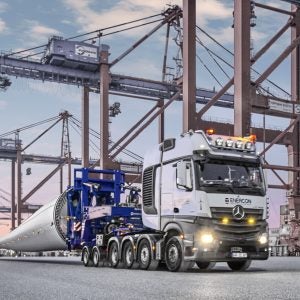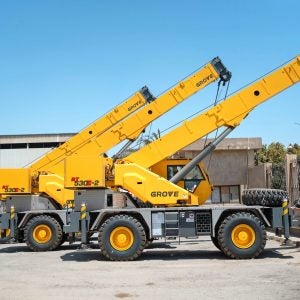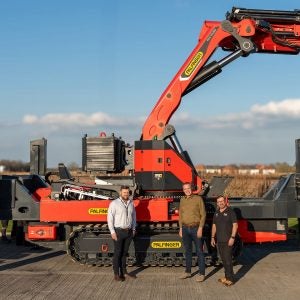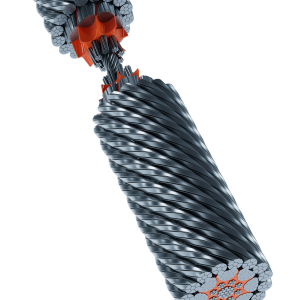Three Japanese manufacturers have responded to the downturn in their home market by agreeing to form an alliance for the production of lattice boom and telescopic mobile cranes.
Sumitomo Heavy Industries, Hitachi Construction Machinery and Tadano plan to collaborate by creating within the next few months a global crane group, consolidating the supply of components and forming a lattice boom crane R&D joint venture.
The move also gets Link-Belt into the US all-terrain market.
The plan was initiated by Sumitomo. Tadano and Hitachi already had a limited alliance, formed in 1999. Sumitomo’s entrance takes it much further.
The three-way alliance includes all overseas operations such as Tadano’s Faun subsidiary in Germany and Sumitomo’s Link-Belt subsidiary in the USA. Together this group of companies will be the largest supplier of mobile cranes in the world, the three said in a joint statement.
Costs will be reduced by combining purchasing power and coordinating manufacturing. Precisely who will manufacturer which components has now to be explored in detail. The principal of cooperation, however, is in place.
Under the outline agreement, Hitachi will supply lattice boom components to Sumitomo, Link-Belt will supply telescopic crane components to Tadano, and Faun will supply telescopic components to Link-Belt.
‘It certainly appears to provide us with an avenue to enter the AT market more rapidly than without it,’ said Link-Belt sales & marketing vice president John Claflin.
The three companies plan to establish a joint venture company in October for the development of lattice boom cranes for the worldwide market, they said. Components for jointly developed lattice boom cranes will be manufactured by Hitachi. Sumitomo and Hitachi will independently customise and assemble lattice cranes, according to the needs of their respective customers. Sales and product support activities will continue by each of them, as done now.
On telescopic crane cooperation, Tadano’s international general manager Tadashi Suzuki said: ‘The details of component supply between Tadano Faun and Link Belt have to be explored. No concrete agreement on details has been established. It is, however, quite rational that Faun will provide some undercarriage components for AT cranes to Link-Belt, since this is the expertise and strength of Faun.’ Suzuki added: ‘As for the component supply from Link Belt to Tadano, nothing has been decided yet. But the two companies share a common philosophy, with the emphasis on quality, and both are the leading suppliers of RT and truck cranes in the world market. We believe there will be lots of room for collaboration in component supply.’ Faced with a dramatic decline for cranes in Japan and Asia since 1999, Tadano has sought alliances almost promiscuously in a bid to cut costs and grow markets. As well as teaming up with Hitachi, and now Sumitomo, it also has a collaboration deal with Kobelco in which it will produces carriers for Kobelco rough terrain models.
Suzuki said: ‘Regardless of this alliance, our intention is to maintain and even reinforce our collaboration with Kobelco. The first batch of RT carriers for certain models is to be shipped out from Tadano to Kobelco around the end of this year, and the transition for all RT model carriers will be completed within three years. Both alliances with Kobelco and Sumitomo/Hitachi constitute the vital part of our total global alliance strategy.’ Under the existing Tadano-Hitachi alliance, Tadano has sold Hitachi-produced crawler aerial platforms in Japan. In return, some Hitachi subsidiaries overseas, such as in Australia, now distribute of Tadano products.






